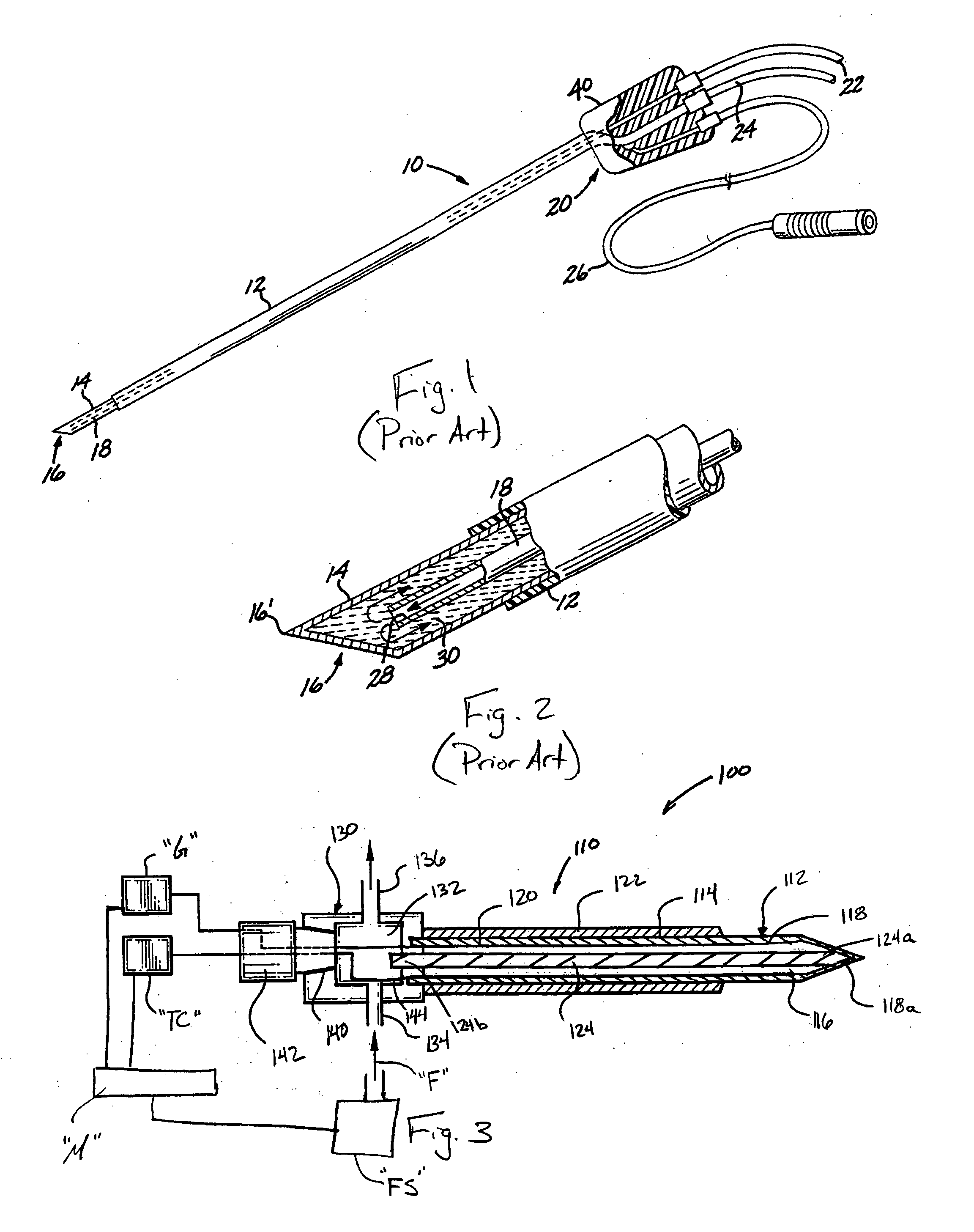Cooled RF ablation needle
a technology of rf and needle, which is applied in the field of new electrosurgical instruments, can solve the problems of destroying adjacent tissue, heating and destroying adjacent tissue, and the size of rf lesions for a given electrode geometry is generally considered to be somewhat limited, so as to prevent tissue ablation
- Summary
- Abstract
- Description
- Claims
- Application Information
AI Technical Summary
Benefits of technology
Problems solved by technology
Method used
Image
Examples
Embodiment Construction
[0049] Referring initially to FIGS. 1 and 2, a prior art needle electrode according is shown and described and is generally designated as 10. As seen in FIG. 1, needle electrode 10 includes a distal end 16 and a proximal end 20 and further includes an outer tube 14 having a tip part 16 which is exposed and a tip point 16′ (see FIG. 2) which is construed so as to penetrate tissue with a minimum risk of hemorrhage from the puncture tract. The non-exposed part of the outer tube 14 is surrounded by an insulating material 12. A distal portion of outer tube 14 is non-insulated and thereby exposed for DC or AC, preferably RF delivery. An inner tube 18 is provided inside the tube 14 co-axially with the outer tube 14.
[0050] An adapter 40 is provided at the proximal end 20 of needle electrode 10, opposite the tip part or distal end 16. The adapter 40 is equipped with a line 22, the line 22 being connected to the inner tube 18 and communicating therewith for providing a cooling fluid, such as...
PUM
 Login to View More
Login to View More Abstract
Description
Claims
Application Information
 Login to View More
Login to View More - R&D
- Intellectual Property
- Life Sciences
- Materials
- Tech Scout
- Unparalleled Data Quality
- Higher Quality Content
- 60% Fewer Hallucinations
Browse by: Latest US Patents, China's latest patents, Technical Efficacy Thesaurus, Application Domain, Technology Topic, Popular Technical Reports.
© 2025 PatSnap. All rights reserved.Legal|Privacy policy|Modern Slavery Act Transparency Statement|Sitemap|About US| Contact US: help@patsnap.com



